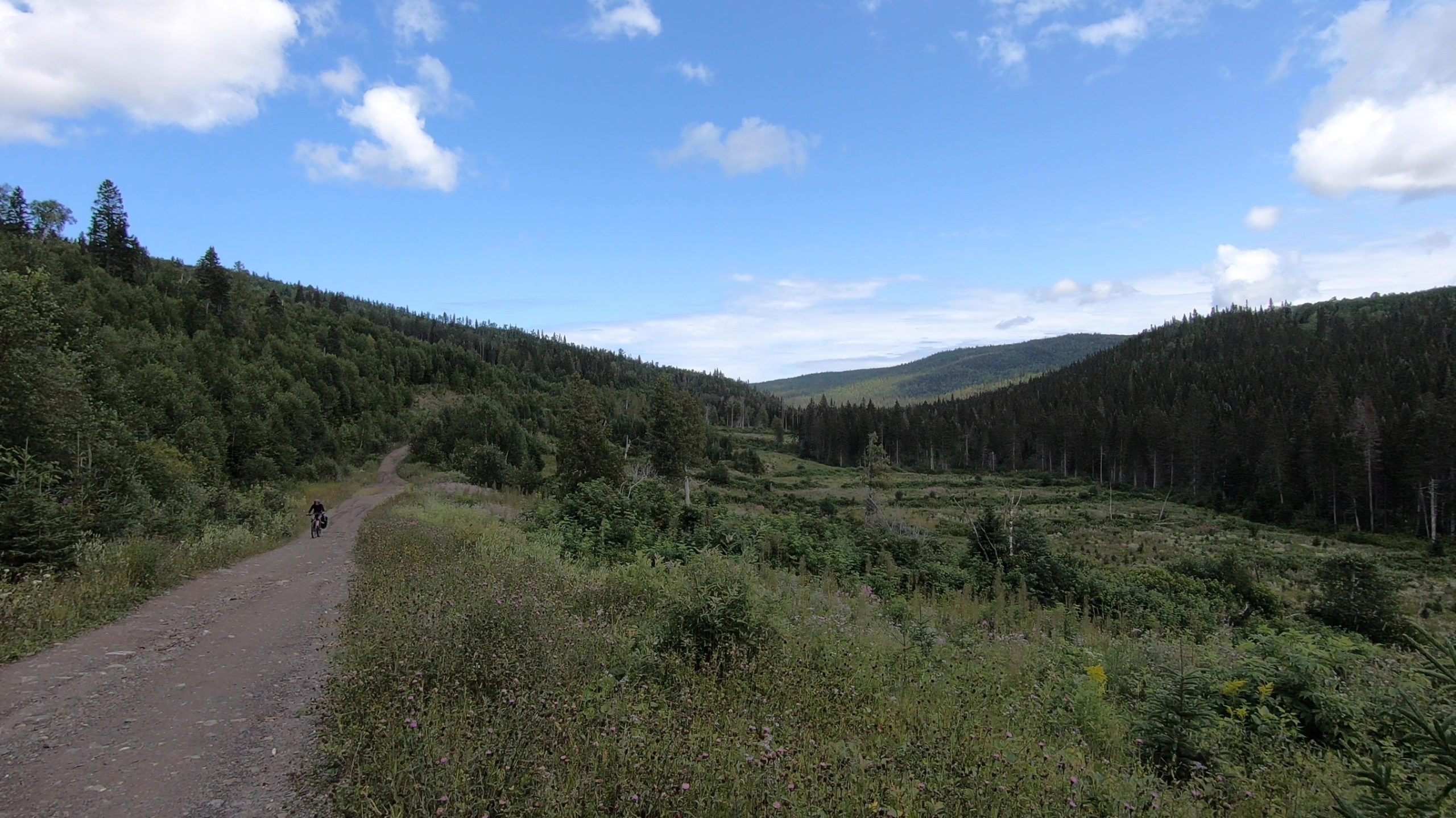
Biking and camping in national parks, wildlife reserves zecs, unoccupied territories... what are the differences?
With a population density of 6 inhabitants per square kilometer, Quebec gathers a lot of uninhabited spaces. Apart from private lands, huge part of the territory is accessible for biking exploration, amongst other outdoor activities. It's also fisherman and hunters paradise. Moreover, there's ressources extraction activities, like logging and mining. The territory is divided in many categories, with their proper protection level, rights and restrictions.
To get a better view of the situation, here are different types of territories where a cyclist would most likely pass on, to then discuss about some specific situations like camping, fishing and campfire. Knowing more about the regulations in effect in those territories can help the traveller to act with consciousness when it's time to take some decisions during a bikepacking trip.
Please note that those informations where valid during research time for the redaction of this article. If you are aware of some changes in regulations or links that are expired, please let me know in the comments!
Unoccupied territories of the domain of the State
The domain of the State, commonly named Crown land in the other Canadian provinces, is all what's not private. It represents almost 93% of Quebec's territory (including 9,2 % that consist of marine environment and 0,9% to Autochtones reserves).
The unoccupied territories are the parts of the domain of the State that aren't specifically defined like structured territories in the Act respecting the conservation and development of wildlife or territories having a protected area status. In other words, they are the part of the territory that are not private and that are not a national park, wildlife reserve, zec, outfitter or other entities defined by the State or other administrative level like municipalities our counties.
The unoccupied territories depend on the Act respecting the lands in the domain of the State. This Act states that "every person may enter on lands in the domain of the State, except as prescribed by law or a regulation of the Government".
National parks of Canada
The Canadian national parks are established to protect and present outstanding representative examples of natural landscapes and natural phenomena that occur in Canada's 39 natural regions. They are protected by law for public understanding, appreciation and enjoyment, while being maintained in an unimpaired state for future generations. Those protected areas are administrated by Parks Canada Agency, mandated so by the Ministry of Environment and Climate Change.
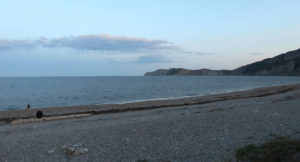
Two of 38 Canadian national parks and one of the 9 national park reserves (national parks in becoming) are in Quebec: Forillon and La Mauricie National Parks and Mingan Archipelago National Park Reserve. Parks Canada protects also in Quebec a marine conservation area, the Saguenay–St. Lawrence Marine Park, as well as 30 national historic sites.
To access the national parks of Canada, you need to pay an entry fee or have a Discovery Pass valid for a year.
What's a protected area?
The Natural Heritage Conservation Act defines a protected area as a "a geographically defined expanse of land or water established under a legal and administrative framework designed specifically to ensure the protection and maintenance of biological diversity and of related natural and cultural resources". National parks are only a kind ofprotected area. The ecological reserves have the highest protection level in Quebec and are generally unaccessible to travelers. The Registry of Quebec's protected areas counts for 10% of Quebec's territory in 2020. It's still far from the 17% goal the state signed for in 2010 during the Convention on Biological Diversity. However, in 2007, the province had only 4.8% of its territory protected, so that's still a progression.
National park of Quebec
Commonly named in Quebec just national parks, they are named provincial parksin the other Canadian provinces. Set aside self-determination policies reflecting in the Quebec's naming system, those parks actually fulfill the "national park" criterias from the International Union for Conservation of Nature (IUCN). The management objectives of those territories are mainly to protect the ecosystems and for recreational uses.

It's in 1977 that Quebec government created the Parks Act, empowering it to establish conservation and recreation parks within which the exploitation of resources (except for fishing) was prohibited. In 2001, the Parks Act was amended to replace the two concepts of conservation and recreation with the designation of national park, meeting the criteria established by the International Union for Conservation of Nature (IUCN).
Quebec has one marine park and 27 national parks. Four of them are administrated by Nunavik Parks, in Quebec Great North. The Société des établissements de plein air du Québec (Sepaq) manages all the other parks south of the 50th parallel, as well as the Saguenay–St. Lawrence Marine Park, in joint management with Parks Canada. Those societies are mandated by the Ministère des Forêts, de la Faune et des Parcs.
To enter national parks, you either have to pay a daily access or have an annual card from the Sepaq.
Wildlife reserves
Even though managed by the Sepaq (like national parks), wildlife reserves aren't protected areas because there's fauna and flora extraction (hunting and logging).
The network of wildlife reserves was created to conserve and promote the wildlife to ensure it remain accessible to Québec residents and that future generations will, in turn, make reasonable and rational use of forest resources.
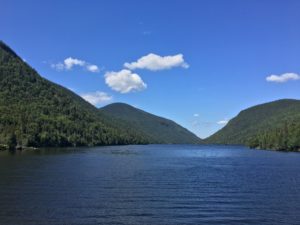
In the early 1960s, access to wildlife and forests on public land was limited due to the many private hunting and fishing clubs. There were some 2,200 private clubs that spanned more than 78,000 square km of public land. These private clubs generally belonged to non-residents, whereas Quebecers didn't have access to these game-filled areas unless they were wardens, members of the support staff, or hunting and fishing guides. Public pressure to democratize wildlife exploded in the 1960s and 1970s. At that time, the government fast-tracked the creation of hunting and fishing reserves and took the first major steps to dismantle the private hunting and fishing clubs. It was the beginning of the wildlife reserves network.
Wildlife reserves mission aim at the conservation through integrated management of ressources. Recreational activities are mainly focused on hunting and fishing. You can find 10,000 km of forest roads scattered on 41,000 square km of territories... an infinity of possibilities for bikepackers.
The Sepaq manage 13 of the 21 wildlife reserves in Quebec and there is no access fees to wander on those territories. Access can however be restricted in some areas, during moose and dear hunting season, generally from mid-September.
Controlled harvesting zones (zecs)
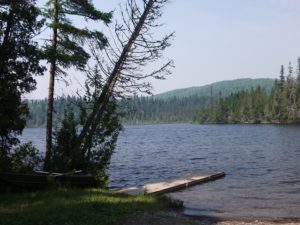
Zec stands for the French name of those entities (Zone d'Exploitation Contrôlée). They are, like wildlife reserves, hunting, fishing and outdoor activities territories. However, instead of being managed by a state society, they are under the responsibilities of non-profit organizations.
There are 85 zecs in Quebec: 63 of hunting and fishing, 21 of salmon fishing and 1 of wildfowl hunting. The hunting and fishing zecs are associated with regional groups and a federation into Réseau Zec.
Because the pricing system is based by vehicle right of passage instead of a per person access fee, it is then free to enter those territories by bicycle. It is needed though to register at the services center or online.
Outfitters
Outfitters are the current version of those 2,200 private clubs that owned the forest before the 1960s. With the reappropriation of those lands, many territories of those former clubs are now wildlife reserves, zecs and even national parks. Today, outfitters are 675 businesses that offer lodging and services or equipment for recreational practice of hunting, fishing and trapping. 350 outfitters are gathered under the Quebec Outfitters Federation.
By extension, the term outfitter ("pourvoirie", in French) is used the designate the territory occupied by the establishment. There are two types of outfitters: outfitters with exclusive rights (PADE), that have exclusive wildlife exploitation rights in a given territory, under a lease arrangement for hunting, fishing and trapping; and the outfitter without exclusive rights (PADNE) where their clients are permitted to hunt and fish on private or domain of the State lands, where they may encounter other hunters or fishers.
As they are individual businesses, the access rights can vary and you have to register to pass by bicycle on their territory.
Regional parks
A regional park is a territory with a dominant recreational vocation, established on domain of the State or private lands.
The Municipal Powers Act allows regional county municipalities (MRC in French) to establish the location of a regional park. It is not a protected area. Although a regional park can have a preservation dimension, it is a territory where the domain of the State lands remain its property and where the use of natural resources is possible, according to laws, regulations and agreements in force. The emphasis is, however, on leisure and outdoor activities with, at a minimum, regional influence.
MRCs can regulate the operation and access of their regional parks, which means that each park has their conditions. Several of the regional parks are members of theQuebec Regional Park Association (PARC).
Other types of territories
The National Capital Commission, a federal Crown Society, manage the Gatineau Park, a conservation and recreational park North of the Canadian capital. For cyclists, we can find 90 km of paths accessible to hikers and mountain bikers, 13 km of bike path and 33 km of paved road.
Summary of access rights and restrictions according to territories types
Aire protégée | Droits d'accès | Camping | Pêche | Campfire | |
Unoccupied territories | No | Free | Camping sauvage autorisé | Permis de pêche obligatoire, sauf quelques exceptions pour les résidents québécois. | Autorisé |
National parks of Canada | Yes | Yes | Wild camping prohibited. | Règlementé dans certains parcs pour certains lieux. | Dans les endroits désignés. |
Parcs nationaux du Québec | Yes | Yes | Wild camping prohibited. | Règlementé dans certains parcs pour certains lieux. | Dans les endroits désignés. |
Réserves fauniques | No | Free | Seulement dans les emplacements autorisés ($). | Lieux déterminés. | Dans les endroits désignés. |
Zecs | No | Gratuit pour vélo. | Camping sauvage autorisé | Permis et droits de pêche nécessaires. | Selon les règles de la zec. |
Outfitters | No | Can vary. Registration required. | Can vary according to outfitter. | Permis de pêche. | Selon les règles de la pourvoirie. |
Parcs régionaux | No | Vary according to park | Can vary according to parc. | Permis de pêche. | Selon les règles du parc. |
Gatineau Park (NCC) | Yes | Free | Wild camping prohibited. | Permis de pêche. | Dans les endroits désignés. |
Wild and organized camping
TheRegulation respecting the sale, lease and granting of immovable rights on lands in the domain of the State states clearly that"camping is allowed on the lands in the domain of the State" except on a few islands indicated in the Regulation. It is needed though to:
- use mobile and temporary camping equipment not attached to the ground;
- leave the occupied site at the end of a stay that may not exceed 7 months during a single year;
- remove, at the end of the stay, the camping equipment from the occupied site;
- clean the site, restore it to its original condition and take away the garbage.
However, this Regulation applies only to lands "over which authority is not held by another minister [than the Minister of Natural Resources and Wildlife] or a public body by the effect of an Act, order in council, title of ownership, order or notice". It means that wild camping is authorized on the unoccupied territories of the domain of the State. National parks, wildlife reserves and other structured territories are managed by different organizations that apply their own rules. It will then be needed to refer to those for other types of territories.
It is strictly prohibited, as much in the national parks of Canada than Quebec, to camp without paying a park permit, which determine the spots to camp. It doesn't mean that you have to pitch your tent by the VRs and the hundreds of campers. Some spots, named rustic or backcountry, offer more remote areas, but with less services. Some are accessible by bicycle. Permit price is also generally cheaper than the permit of fully organized campgrounds. It is possible to book online.
If entrance is free in wildlife reserves during the day, an access right is needed to spend the night. It can be acquired at the service centers on the reserve. This access right specifies the spot where the night can be spent. The territory of some reserve is very vast and there are less employees than the national parks. It is possible that there aren't anyone attending at the service post and the regulation states that " the applicant shall complete the form available at the reception station [...] and deposit it at the designated place accompanied with, if applicable, the corresponding fee".
About the zecs, the Regulation respecting hunting and fishing controlled zones of the Act respecting the conservation and development of wildlifeis clear: a zec cannot prohibit tent camping on its territory, unless it is on a road or trail or a boat ramp. Zecs are then an ideal territory for wild camping. Some zecs however can charge a tariff per tent for wild camping. Some organized or semi-organized campgrounds are also offered for a price range depending on the services offered.
Outfitters establish or no campsites and their condition of use. However, if it's an outfitter without exclusive rights on the domain of the State (and not a private land), it would be possible to wild camp.
Some regional parks offer lodging services like camping and can rule wild camping, which what is doing Gatineau Park.
National parks of Quebec comitted to set up camping spots specifically for cyclists, with the Bienvenue Cyclistes! label from Vélo Québec. The majority of national parks now have those areas, at an economical price, even more for people travelling alone, because the pricing is per person instead of per site. Some are sites totally separated from organized campgrounds and others, exclusive spots inside those campgrounds for those arriving by bicycle without booking in advance. Unfortunately, Parks Canada still hasn't applied this concept in their Canadian national parks.



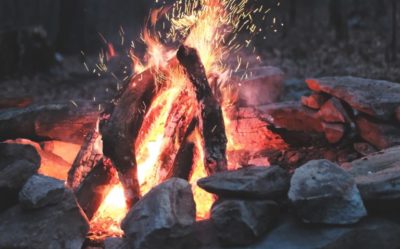
And if I want to fish?
Do you dream to go on an adventure with your fishing rod on your bike to get your dinner after the day's ride? It is possible, but better be aware of good practices and rules to follow.
In general, on the waters of the domain of the State, the fishing licence is required in order to fish. It can be bought in many stores and locations. Note that there is a different price for Quebec's residents and non-residents.
The province is divided in 29 zones which determine some fishing conditions, like length limitations for some species. Rules may also differ from those of the zone in certain specific territories (zecs, outfitters, wildlife reserves, etc.), which can also charge fishing rights.
There are some moments or areas where it isn't necessary to have a fishing licence, only for Quebec's residents:
- the 3 days of Fête de la pêche, except for salmon;
- fishing for any species other than salmon in the St. Lawrence(zone 21)and the part of the rivers in Gaspesie(zone 1)that are located between the St. Lawrence and the main road 132;
- fishing for rainbow smelt and Atlantic tomcod in the St. Lawrence River and its tributaries downstream from the Laviolette bridge (Trois‑Rivières);
- to fish for freshwater crustaceans.
In the national parks of Canada, angling fishing is regulated and authorized in some areas. Each park has their own conditions. For the Canadian parks having fishing activities in Quebec, look for details about Forillon and La Mauricie.
In the Sepaq national parks and wildlife reserves, it is possible to fish in specified areas, paying a fishing rights, either for the day, or asa package with a camping spot, rustic camp or cabin. Wildlife reserves represent 95% of the fishing offer at the Sepaq. Usage of motor boat being restricted in national park, fishing there is more relax. The service centers receive the catch reports for statistics.
It is needed to pay a fishing right in the zecs, and you need to register your catch when you leave. Outfitters with exclusive rights and outfitter without exclusive rights on private land will have their own fishing programs and fishing rights while regional parks can regulate fishing. Like everywhere else, the fishing licence is necessary.
At Gatineau Park, it is possible to fish without additional authorization than the fishing licence in all the lakes that are accessible by the official paths, except Lakes Pink, Edward and Mousseau (Harrington Lake). It is not allowed to fish from the lake's beach.
What about campfire?
Quebec is not protected from the threat of forest fire. From 2015 to 2019, close to 400 square km of forests burst into flame. It is recommended to avoid making fires by dry or windy times. Sometimes through the year, open fire bans come into effect, announced by the SOPFEU. We can find on their website map of active fires, territorial bans and level of dangers.
Moreover, minimizing campfire impact is part of the principles of Leave No Trace Canada. This code of conduct recommend instead to "use a lightweight stove for cooking and enjoy a candle lantern for light".
That being said, the Forest Protection Regulation of the Sustainable Forest Development Act authorized, where there are no ban in effect, to make campfire without the need for permits. However, any person who starts a fire in or near a forest must:
- first clear the place where the person must start the fire by removing all humus, dead wood, branches, scrub and dry leaves from the surface within a radius large enough to prevent the fire from spreading;
- have in his or her possession, on the premises where the person wishes to make a fire, the equipment required to prevent the fire from spreading and to extinguish it;
- remain on the premises until the fire is completely extinguished.
Also, if some cyclists would be tempted to smoke while riding, know that this same Regulation state that "no person may smoke in or near a forest from 1er April to 15 November while working or travelling, except in a building or a closed vehicle". If you need to smoke, stop on an open area. When you're done, put out the butt by getting it wet or crushing it on a rock. Then, dispose of it in an container organized for it.
In national parks, either of Canada than Quebec, it is possible to make a campfire only in the designated areas, when there is no ban in effect. It is also necessary to get the wood provided (for sale in the parks). In those protected area, it is illegal to take wood from the forest to burn it and using dead wood is prohibited.
The Sepaq is asking to make campfire only in the designated areas in all their network, which includes wildlife reserves. Each zec, outfitter and regional park can regulated the usage of fire but depend of the territorial ban announced by the SOPFEU.
Let's go explore!
This exercise of explaining the different conditions of passage, camping, fishing and campfire on our large Quebec territory aims to understand the regulatory framework that governs these activities. The regulation of outdoor activities may seems for some people omnipresent, for others, filled with gray areas. On the road, if in doubt, ask (if you see other humans), read the signs (if there are any)... and use common sense. Remember that bikepacking is relatively a recent activity and some might be surprised to see you pedaling on forest roads or elsewhere with your gear! Sharing the territory in harmony with people practicing other types of activities should be everyone's goal.
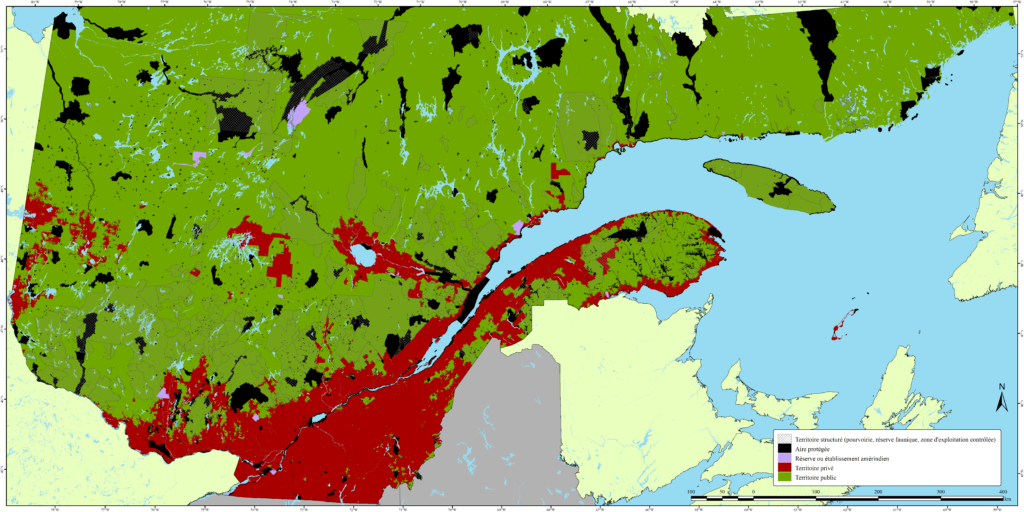
Jean-François says:
Wow ! Super explications détaillées. Une chose que je me suis toujours demandé c’est: Existe-t-il des cartes qui montrent les territoires de terres publiques non gérées?
Bikepacking Québec says:
Je n’ai malheureusement pas trouvé de carte qui indique spécifiquement tous les territoires libres du Québec. Voici pouvez par contre consulter la carte interactive du Registre du domaine de l’État, en créant un identifiant pour consulter en détail le découpage du domaine de l’État québécois: https://appli.mern.gouv.qc.ca/rde/
Bikepacking Québec says:
Sinon, j’ai aussi trouvé cette carte: https://www.reddit.com/r/Quebec/comments/5ihyqu/carte_de_la_tenure_des_territoires_structurés_et/
Et bien celle-ci, qui contient tous les territoires à valeur récréatives, mais qui ne contient pas les terres privées: https://mern.gouv.qc.ca/repertoire-geographique/territoires-recreatifs-quebec/
Sallenave says:
Je voudrais commencer le printemps prochain et besoin de conseil!
Sallenave says:
Exis t il des clubs j’habite Montreal